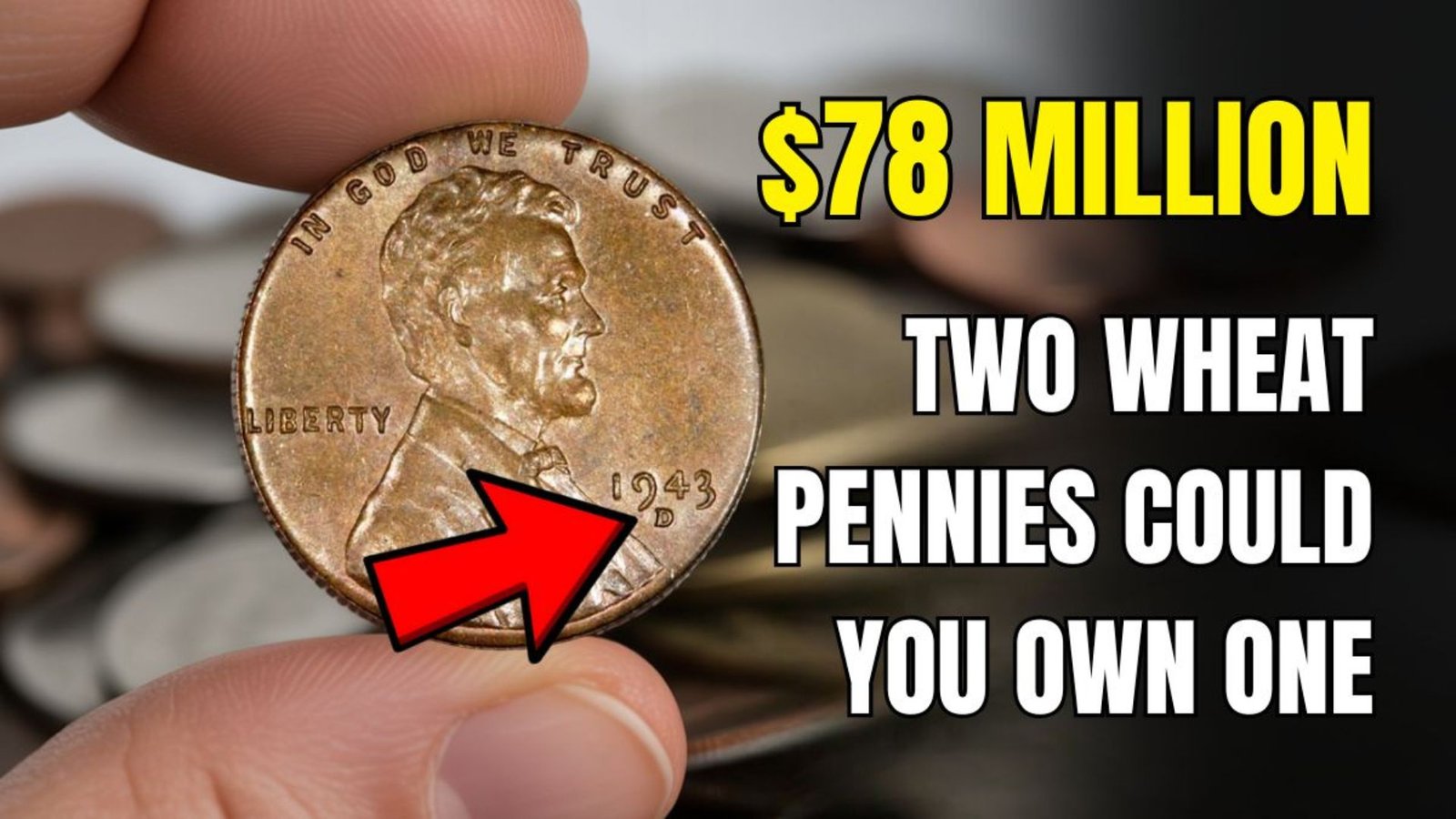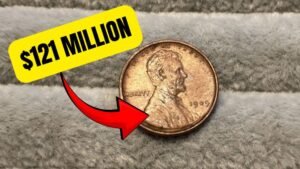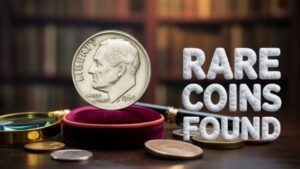Imagine pulling a dusty old penny from your couch cushions or spare change jar, only to discover it’s worth a fortune. Sounds like a dream, right? But for coin lovers and everyday folks alike, the Lincoln Wheat Penny turns this fantasy into a real possibility. These tiny treasures, with their iconic wheat stalks on the back, were made from 1909 to 1958 and honored President Abraham Lincoln.
While most are worth just a cent, one super-rare version—the 1943 Bronze Lincoln Wheat Penny—could fetch up to $78 million in top shape. Experts say a few of these gems might still be floating around in circulation today. Could you be holding one without knowing? Let’s dive into the story, spot the signs, and explore why this coin is buzzing in the world of rare collectibles.
What Makes the Lincoln Wheat Penny So Special?
The Lincoln Wheat Penny, often just called the “wheat penny,” is a piece of American history you can hold in your hand. It kicked off in 1909 to mark the 100th birthday of Abraham Lincoln, the 16th U.S. president who led the country through tough times like the Civil War. Famous artist Victor David Brenner designed it, putting Lincoln’s calm profile on the front (that’s called the obverse) and two tall wheat stalks on the back (the reverse) to nod to America’s farming roots.
Back then, these pennies were struck— that’s the fancy word for making coins—from a mix of 95% copper and 5% tin and zinc, giving them that warm, reddish glow. Billions rolled off the presses at mints in Philadelphia, Denver (marked with a “D”), and San Francisco (marked with an “S”). They were everyday money, used for buying candy or newspapers. But their simple beauty and link to Lincoln made them favorites for collectors even while they were still being spent.
What sets the wheat penny apart from today’s shiny cents? The back design! Modern pennies show the Lincoln Memorial or a shield, but the wheat version screams “vintage.” And with so many out there, hunting for them in loose change is a fun, low-cost hobby that could pay off big.
The WWII Blunder That Created a $78 Million Masterpiece
Now, let’s get to the heart of the hype: the 1943 Bronze Lincoln Wheat Penny. During World War II, the U.S. needed every bit of copper for bullets, wires, and other war gear. So, the government switched penny production to cheap steel coated in zinc, making them look silvery and weigh less—about 2.7 grams instead of the usual 3.11 grams for bronze ones.
But here’s where the magic (or mistake) happens. A handful of leftover copper blanks from 1942 got mixed into the 1943 batch at the mints. Machines stamped them with the 1943 date anyway, creating accidental bronze beauties amid a sea of steel. Fewer than 20 of these are known to exist today—one from Philadelphia, a couple from Denver, and maybe 10 to 12 from San Francisco.
Why the insane value? Rarity, of course! In 2010, one sold for $1.7 million at auction. But experts now estimate a perfect, untouched one could hit $78 million or more, thanks to rising collector demand and the coin’s flawless story. Some say even higher figures like $99 million or $177 million in wild speculation, but $78 million is the solid numismatic (that’s coin-expert talk) benchmark. These aren’t just coins; they’re time capsules from a world at war.
Could This Rare Penny Still Be Out There in Circulation?
Yes, it’s possible—and that’s what keeps treasure hunters up at night! Since wheat pennies circulated until the late 1950s, and old coins pop up in family jars or estate sales, a 1943 bronze one could still be lurking. Most steel 1943 pennies got spent and worn down, but the bronze errors were so odd that some owners might have tucked them away without realizing. With only about 20 confirmed, experts believe a few more could surface from attics or piggy banks.
Think about it: People find rare coins all the time. In 2023 alone, a kid in Germany dug up a Roman coin worth thousands in his backyard. For the Lincoln Wheat Penny, your best bet is checking grandma’s coin collection or that forgotten roll from the bank. But act fast—once found, these head straight to auctions where big-money collectors snap them up.
How to Spot a Valuable Lincoln Wheat Penny: Easy Guide
Don’t toss that old penny yet! Grabbing a magnifying glass and these simple steps could uncover a winner. Start with the basics:
- Check the Year: Look for 1943 on a copper-colored coin. Steel ones are common; bronze is the jackpot.
- Feel the Weight: Use a kitchen scale. Bronze: around 3.11 grams. Steel: lighter at 2.7 grams.
- Examine the Color: True bronze has a reddish hue that doesn’t fade like zinc’s dull gray.
- Hunt for Errors: Doubling in letters? Off-center strikes? Those boost value too.
- Mint Mark Magic: A tiny “D” or “S” under the date means Denver or San Francisco—rarer spots.
If it passes, snap clear photos from both sides and contact a pro appraiser from the American Numismatic Association (ANA). They can verify without charging an arm and leg. Pro tip: Never clean your coin—rubbing off the natural shine tanks its worth!
Top Valuable Lincoln Wheat Pennies at a Glance
Wondering about other heavy hitters? Here’s a quick table of standout Lincoln Wheat Pennies that could make you rich. Values are for top-condition examples based on recent auctions.
| Year & Variety | Why It’s Rare | Estimated Value | Known Examples |
|---|---|---|---|
| 1943 Bronze | WWII copper error on steel year | Up to $78 million | Fewer than 20 |
| 1909-S VDB | First year with designer’s initials | $50,000–$100,000 | About 500,000 minted |
| 1914-D | Super low production run | $100,000–$150,000 | Only 1.2 million |
| 1955 Doubled Die | Printing mistake doubles letters | $1,500–$50,000 | Around 20,000–40,000 |
| 1926-S | Scarce San Francisco mintage | Up to $149,500 | Low survival rate |
This table shows how errors and low numbers drive prices sky-high. The 1943 bronze steals the show, but even “common” rares like the 1955 can fund a vacation.
Why Hunt for These Coins? More Than Just Money
Chasing the Lincoln Wheat Penny isn’t all about the cash—it’s a thrill ride through history. Each coin whispers tales of the Great Depression, booming ’50s, and wartime grit. Joining clubs like the ANA connects you with fellow hunters, swapping stories over coffee. Plus, it’s budget-friendly: Start with a $10 coin album and free bank rolls.
But remember, fakes are out there. Shady sellers plate steel pennies in copper to trick newbies. Stick to trusted sources and get certifications from PCGS or NGC for big finds—they grade condition on a 1–70 scale, where 70 is perfection.
Final Thoughts: Time to Raid Your Change Jar!
The idea of a Lincoln Wheat Penny worth $78 million still in circulation is the stuff of legends—and it just might be true. From a wartime whoopsie to a symbol of simpler times, this little coin packs a punch. So, next time you spot a wheat-backed penny, pause and inspect. You could be inches from life-changing luck. Happy hunting, and who knows? Your story might be the next big auction headline.




